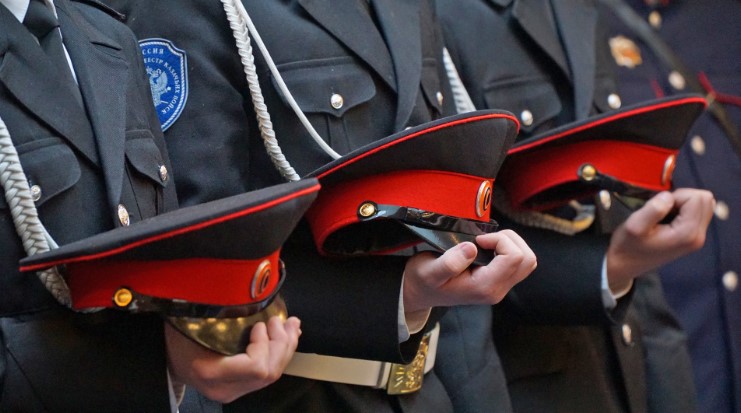
Cossacks Form New Reserve Army in Russian Push Toward Chasiv Yar
Publication: Eurasia Daily Monitor Volume: 21 Issue: 67
By:

Executive Summary:
- Russia passed legislation creating a Cossack “mobilization reserve,” a reflection of Moscow’s broader efforts to use the state-registered Cossack movement as a recruitment tool for the war in Ukraine.
- The Cossacks loyal to the Kremlin are playing an increasingly active role in Russia’s offensive campaigns, with Cossack reconnaissance battalions reportedly fighting around Chasiv Yar.
- Moscow’s funding of Cossack activities has increased several times over since the start of the war, presumably in an attempt to attract more Cossacks to fight on the Russian side.
On March 23, Russian President Vladimir Putin signed a bill authorizing the creation of a Cossack “mobilizational reserve.” The bill was promoted by Nikolai Doluda, former leader of the state-run (but nominally independent) All-Russian Cossack Society (VsKO). Doluda estimates that there are 60,000 registered Cossacks available to fill the Russian reserve—double the number of Cossack troops who have already been mobilized to fight in Ukraine (Kavkaz.realnii, April 2). The bill reflects a broader initiative from Moscow since the start of the war to focus on cultivating patriotism among Cossacks, including through increasing funding for their activities. The Kuban Cossacks, for instance, reported a sevenfold increase in revenue for 2022 compared to 2021, and their budget for the Cossack Don Army based in the Rostov region doubled (Kavkaz.realnii, May 9, 2023).
The new measure is an important step in bolstering the Russian military. Building on an initiative begun in October 2023, it formalizes the Cossacks into a standing army with their own equipment, specialists, and training. Simultaneously, the bill encourages unregistered Cossacks to sign up for registered societies so they might better “serve the Fatherland” (Parlamentska Gazeta, October 9, 2023). According to Vitaly Kuznetsov, chief ataman of the VsKO, the Russian Ministry of Defense is signing reserve contracts with volunteers who wish to participate independently from the Cossack societies. Many of those volunteers are unregistered Cossacks whose overall numbers are much greater than those of the registered Cossacks. Their participation in the conflict has been noted by Ukrainian side, with Serhiy Cherevaty, spokesperson for Ukraine’s forces in the east, reporting on the widespread Russian use of “motley formations” along different sections of the front (Kavkaz realnii, April 2).
The Cossack mobilization reserve bill mirrors three significant developments in Russian society. First, the increasing number of Cossack troops deployed to Ukraine conceivably helps explain why Krasnodar ranks among the regions with the highest number of losses. Western reports have long focused on the ethnic dimension of Russia’s war against Ukraine, but the fact that the majority ethnic Russian Krasnodar is in the top-five regions for overall deaths is a detail that has not attracted much attention (Mediazona, accessed April 30). Krasnodar is Doluda’s home region and the Cossack voiska (society) there has “more than 56,000” men out of the over 160,000 total registered Cossacks. For comparison, there are only about 36,000 registered Don Cossacks in the “All-Great Don Army.” Don Cossacks are known for their historical role in fighting the Russian Empire’s enemies—foreign and domestic—in the 19th century, which was critical to the empire’s expansion (RG.ru, November 3, 2023.)
Second, one incentive for “ordinary people”—those who have no connection to the Cossacks—to sign up with the Cossacks is a chance to become part of Russia’s new elite (see EDM, March 13). In a recent address, Putin advised the Russian people to prepare for the coming of a “new elite.” He noted that whereas the current elites comprise businessmen and technocrats, the new elite will be veterans of the war. They are those who are “aware of three things: following the rules, owning weapons, and unconditional loyalty to the supreme power” (Novaya Gazeta, March 14). These statements demonstrate how Moscow distorts history and patriotism to unite the Cossacks around the war.
Third, Cossack forces are playing an active role in the Kremlin’s push to move further into Ukraine. The Cossack reconnaissance battalion “Terek” celebrated its anniversary by carrying out offensive operations around Chasiv Yar. Protecting the flanks of the invading armies, the battalion uses drones to conduct surveillance of the frontlines, calling in coordinates for more targeted artillery strikes and establishing points for medical treatment close to combat.
The registered Cossacks showed some signs that they are starting to believe Putin’s rhetoric, claiming that “Russia’s elite have gathered here” (Vsko.ru, April 7). Cossack forces indicate that they will play a significant role in the upcoming offensive. A post from the Telegram channel “First Cossack,” used by Cossacks on the frontlines, passed on a claim attributed to American journalists that the prospects for Ukrainian forces are now grimmer than at any time in the conflict. The post goes on to predict that, once the Ukrainians are ousted from Chasiv Yar, Russian troops will take “Kramatorsk and Konstantinovka under fire control, which will be a ‘serious shift in the fate of Donetsk’” (T.me/cossack_pika, April 20).
The Cossacks will most likely be heavily involved in the anticipated summer offensive. The bill institutionalizing the new Cossack reserve army should thus be seen as a reflection of the current situation rather than a move to generate similar trends in Russian society. The Cossack case is an important example of how Russia successfully manipulates history and cultural identity to recruit soldiers for its war (see EDM, April 4, 9, 16).



